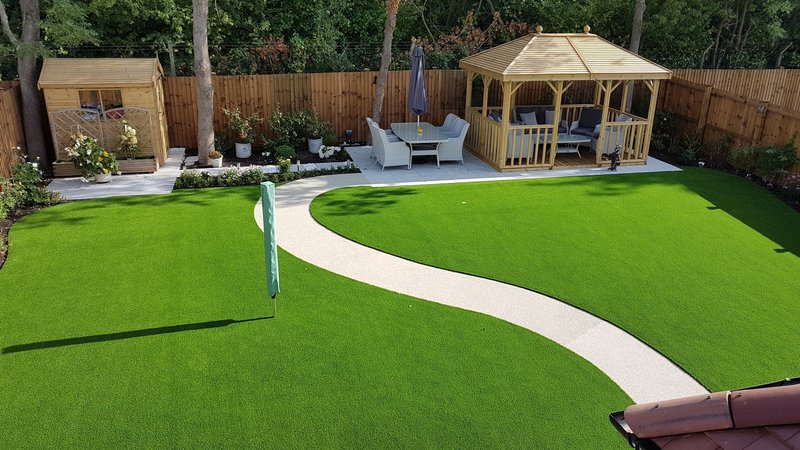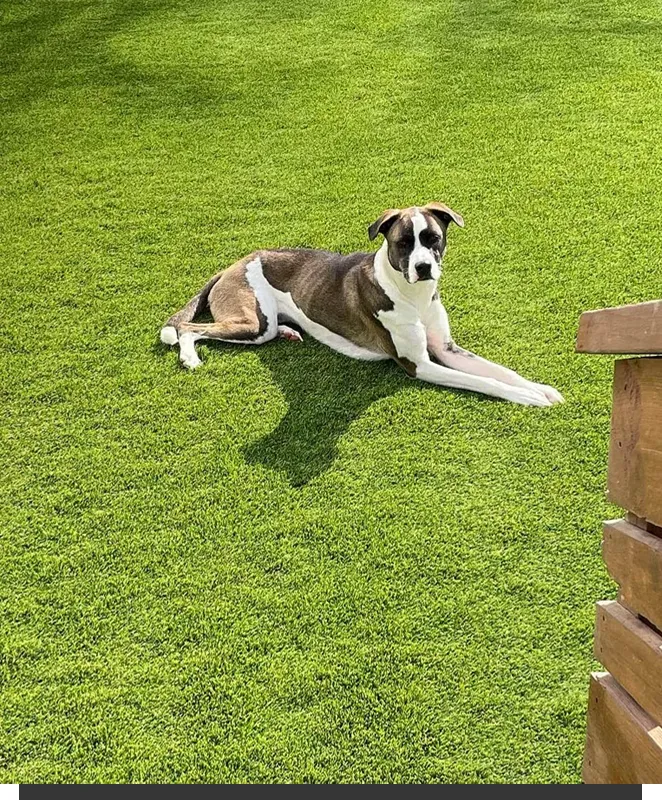Comprehending Exactly How Synthetic Grass Functions for Your Home and Garden
Synthetic grass has arised as a functional option for property owners looking for to enhance their outdoor spaces without the worries of conventional grass upkeep. Comprehending its composition, installation process, and the numerous types readily available can disclose significant benefits for both aesthetics and capability. The implications of choosing synthetic grass expand past mere appearance; they touch upon environmental factors to consider and long-lasting sustainability. As we check out these aspects, one should consider just how this cutting-edge strategy can basically alter the landscape of home horticulture. What elements should you weigh prior to making the transition?
Advantages of Fabricated Grass
Identifying the expanding appeal of artificial turf, it is crucial to explore its countless advantages. Unlike natural grass, man-made turf does not require watering, fertilizing, or mowing, which converts to time and cost savings for property owners.
Furthermore, synthetic grass supplies a rich and regularly eco-friendly appearance throughout the year, no matter climate problems. This visual charm improves the aesthetic quality of any landscape, making it an appealing option for household homes. Furthermore, man-made grass is long lasting and made to hold up against heavy foot web traffic, making it an ideal option for family members with kids and family pets.
Security is an additional crucial factor to consider; contemporary synthetic lawn is usually made from non-toxic products and integrates shock-absorbing technologies, reducing the danger of injuries during play. Lastly, man-made lawn is resistant to parasites and weeds, getting rid of the requirement for chemical treatments, thereby promoting a healthier outdoor atmosphere. In general, the advantages of synthetic grass make it a compelling alternative for enhancing home and yard areas.
Setup Refine Review
When taking into consideration the installation of synthetic grass, a methodical technique is important to make certain optimum outcomes. The installment process normally begins with detailed website preparation, which includes getting rid of the area of any existing turf, particles, and rocks. This action is critical for establishing a secure and level foundation.
Next, it is necessary to evaluate the water drainage abilities of the location. Correct water drainage is important to stop water pooling externally, which might result in early wear or problems with mold and mildew. If needed., this may call for excavation and the installation of a water drainage system.
When the site is prepared, a base layer is set up, generally containing smashed rock or decomposed granite, compressed to create a solid surface area. After accomplishing a smooth base, a geotextile fabric is laid down to prevent weed development.
The last stage entails laying the synthetic grass itself. The turf rolls are put, reduced to fit, and safeguarded at the joints using customized or glue lawn tape. Infill materials might be used to boost stability and improve the overall appearance. Effectively following these steps will lead to a long lasting and cosmetically pleasing synthetic grass setup.
Kinds Of Artificial Turf

One of the main categories is domestic turf, which is typically utilized in gardens, backyards, and play areas. Industrial grass, on the other hand, is engineered for high-traffic areas, such as sports areas and municipal parks.
Another category consists of landscape turf, which mimics natural yard carefully to improve the aesthetic allure of gardens and outdoor areas. In addition, putting eco-friendly turf is especially created for golf enthusiasts, including a shorter pile elevation and a smooth surface for an ideal placing experience.
Finally, pet-friendly lawn integrates antimicrobial residential properties and resilient products to make sure a sanitary and safe atmosphere for pets. Choosing the best type of synthetic grass is important for attaining the intended look and functionality in your home and garden.
Upkeep Needs
Appropriate upkeep is crucial for expanding the lifespan and appearance of man-made lawn. Normal upkeep not just improves aesthetic appeal however likewise makes certain optimum efficiency. The main upkeep jobs include brushing, rinsing, and inspecting the turf.
Rinsing the lawn with water helps get rid of pet dog, dust, and particles waste. Making use of a click to find out more hose with a spray nozzle makes this task effective and reliable. In areas vulnerable to heavy rainfall, make sure correct drainage to avoid pooling.
Furthermore, routine assessments for problems, such as rips or loose seams, are important. Prompt fixings can prevent much more considerable concerns and keep the integrity of the turf. By adhering to these maintenance demands, home owners can appreciate the beauty and functionality of their synthetic lawn for several years ahead, making certain a vibrant and inviting outdoor space.
Ecological Factors To Consider
Synthetic grass presents a complex range of environmental considerations that necessitate cautious assessment. Mesa artificial grass. While it lowers the demand for water, plant foods, and pesticides, which are usually related to all-natural lawn maintenance, there are substantial problems concerning its use, disposal, and manufacturing
The manufacturing of artificial lawn includes petroleum-based materials, questioning regarding fossil gas intake and greenhouse gas discharges. The setup process often calls for a layer of infill, often made up of products like crumb rubber, which can release unsafe chemicals into the environment.

Disposal of artificial lawn offers one more obstacle, as it is not eco-friendly and can add to garbage dump waste. Some recycling options exist, yet they are not extensively offered or available.
Conclusion
In summary, man-made turf provides various benefits for domestic and yard applications, including aesthetic allure, low maintenance, and safety and security for kids and family pets. Different types of artificial turf cater to various demands and preferences, while ecological considerations highlight its prospective sustainability advantages.
Overall, the benefits of man-made lawn make it an engaging alternative for enhancing home and garden areas.
When taking into consideration the installment of artificial turf, a methodical technique is crucial to guarantee optimal outcomes. The lawn rolls are positioned, reduced to fit, and secured at the seams using adhesive or specific turf tape. Correctly following these steps will result in a long lasting and cosmetically pleasing fabricated lawn installment.
In summary, artificial turf presents various advantages for domestic and garden applications, including aesthetic appeal, low upkeep, and security for kids and animals.